Introduction
This is a hands-on preliminary review of theLeaf Aptus 22. Through the auspices ofAmplis, the Canadian distributor for Leaf products, (as well as Hasselblad and a number of other major brands), I was able to use the Aptus on a Hasselblad H1 system for 4 days in late July, 2005. My thanks to Amplis Product Marketing ManagerJon Stewartfor making his demonstration unit available for this period. I know how much it has been in demand since availability began just a few weeks prior.
I wrotepreliminaryabove, because 4 days isn’t sufficient to really put a product as sophisticated as this fully though its paces. Therefore I was only able to test the Aptus 22 using its self-contained battery and a Compact Flash card, not with the Digital Magazine, Bluetooth-connected Ipaq, or in tethered mode. I also didn’t test the Leaf Capture 10 software, as will be discussed below.
What I did was to compare it extensively to thePhase One P25. The Aptus is only the second self-contained medium format back to come to market, following the P series back’s introduction about 9 months ago. The first such back, theKodak DCS Pro 645, was discontinued in 2004. (In my view, Sinar’s eMotion 22 simply does not have enough of a presence in North America to be considered a viable option).
I owned a Kodak 645 back originally, but when the Phase One P25 came out I purchased one of the first units to become available. I have been using it extensively ever since. Since the P25 is currently the only other self contained medium format back generally available in North America, and since I already own one, it seems appropriate if not indeed necessary to do this Aptus review if not as a direct comparison, then at least with a close eye on how these two similarly priced products match up when it comes to features and performance.
In The Cockpit

Fig. 1
If you’ve never used either a Hasselblad H1 or an Aptus 22, then setting out with this combination for the first time to do photography can be as intimidating as being plunked into the pilot seat of a Boeing 777. There are more buttons, knobs, levers, and menus than you imagined possible in such a relatively confined space. But, to master the beast, one must get to know them.
Though I am a Contax 645 user, I havesomefamiliarity with theH1because I had been invited to the original US press launch event in New York in 2002. I’d had the opportunity then to spend most of a day with the Hasselblad engineers, becoming familiar with this then new camera system. Though nearly 3 years have since passed, it didn’t take that long for me to Enfamil myself with this very impressive camera. (An hour reading the manual didn’t hurt either).
The Aptus is a different story. In May, 2005 I attended a launch event for the Aptus 22 and was able to spend some time examining a unit and in discussion with Ilan Carmi, Leaf’s Product Marketing Manager from Israel. You can read my impressions from that dayhere.
So, when I sat down with the Aptus for the first time I had some idea of what to expect. Nevertheless, it took me the better part of an afternoon of sitting with the H1 and the Aptus 22, along with their respective manuals, till I felt comfortable enough to go shooting with them. By this I mean that I was confident that I could adjust the devices various settings appropriately for what I wanted to accomplish, not just simple point-and-shoot operation, which is actually quite straightforward.
The Screen

The Aptus’ screen is a knock-out; probably the brightest and sharpest I’ve seen on any camera, and certainly the largest. It definitely makes the P25’s screen seem small and somewhat dim by comparison. Surprisingly, it also is quite viewable in daylight. It helps to shade the screen from direct sunlight with ones body, but even on a bright day I had no problem viewing the screen outdoors. The P25’s screen, on the other hand, is a compromise. It isn’t that great in the sun, or indoors.
But, the price that one apparently pays for the stunning screen on the Aptus is battery life. Unless you are very stingy with your auto-turn-off timer settings, leaving the screen on for extended periods is going to seriously diminish available battery time. With the P25, on the other hand, the impact of leaving the screen on, even continuously, is minimal. So one has the choice between a great screen and high battery consumption (Aptus 22), or a mediocre screen and extended battery life (P25).
Menus and User Interface
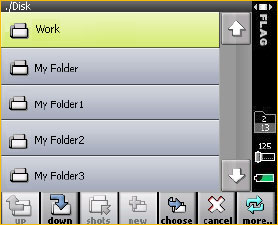
In addition to its size, brightness, and clarity, the Aptus 22’s LCD is a touch screen. This means that all back settings are done by tapping on selected items on the screen. The back comes with a stylus, identical to the type that you’d find with a PDA, and navigation, item selection, and even text entry are all done with the stylus, or ones finger, by tapping on the screen.
The stylus is a nice touch, and it hides away in a slot on a top edge of the back. But, frankly, I would imagine that it will get dropped and lost in the grass, sand, or snow within a few days. Fortunately the screen and menu items are large enough that making ones selections by tapping with a finger work just fine. If the back were mine I’d simply leave the stylus tucked away to impress people when doing demonstrations, and the rest of the time would use my forefinger (which isn’t as easily misplaced or lost).
Now we come to what will probably be the most contentious aspect of this review, the menus. If the P25 didn’t exist it would be easier to judge the Aptus’ user interface on a stand-alone basis. But, the P25 does exist, and so a comparison is inevitable.
The P25’s approach is minimalist. There are 4 soft-keys beside the LCD screen. These are physical keys that can be depressed, even with gloves on. Their function changes depending on what is being accomplished, and their current function is displayed via on-screen selection labels beside the buttons.
The P25 allows you to only accomplish certain basic tasks. Setting ISO, formatting a card, and reviewing images, along with optional items such as viewing file data and histograms. There are a few other housekeeping functions, and that’s about it. Phase One’s design assumption is that you’ll do everything else in your raw image processing software.
The Aptus 22 takes a diametrically opposed approach. The back allows you extensive configuration, settings and image analysis capability, and even the ability to enter notes into a file’s EXIF data, including Copyright notice, via an onscreen keyboard. Even subtleties like the degree of transparency of the histogram overlay are user settable via the touch screen.
So, to a large extent this comes down to a matter of user needs and preference. It would be a mistake to label one approach as intrinsically superior to another. The iDrive system on BMWs make some people crazy. I know several owners who have failed to master it even after a year behind the wheel. Others love it. I think the same aspect of personal preference will be found regarding the Aptus’ screen interface approach.
Here’s my personal perspective. I do 95% of my shooting on location in conditions ranging from the benign to the harsh. I do my photography when it’s dark, cold, humid, hot, raining, snowy, and in blowing sand and dust. In other words – in the real world. When I shoot in the studio, I shoot tethered.
Medium format backs like the Aptus and Phase P series only shoot raw. They do not produce JPGs in-camera. When shooting raw the only setting that has any permanent effect on the raw file is the ISO setting. Everything else that one sets in a digital camera or back is simply a tag that accompanies the raw file into the raw processing software. It may change the way that the software previews the file, but it doesn’t change the file itself.
The Aptus allows you great versatility in fine tuning your images in the camera. If you’re the type of photographer that likes to do so in the field, then this is the back that will please you the most. When shooting under controlled conditions you might very well be able to produce files that can be loaded straight into the raw processing software and then batched out for usage, requiring little to no additional processing.
But, I need to ask, is this the way that most professional photographers work? It seems to me that ones focus in the field is shooting, and then when back at ones desk it’s refining and perfecting the image. It comes down to a matter of style, and of course there’s nothing in the Aptus design that forces the photographer to utilize the extensive settings and file manipulations that are possible in the back. One can simply set the ISO and shoot, just as with the P25. But, if one wants to fine tune in the field, one certainly can with the Aptus. It’s simply a matter of personal preference.
I do knock the Aptus down a point or two compared to the P25 when it comes to operation with gloves on. I shoot at least 50% of the year in temperatures below freezing, whether it’s because I live in a northern clime, or because I’m shooting in mountains, the Arctic or Antarctic. How well a camera handles with gloves on is therefore important to me, and in this regard the Aptus’ touch screen is much less practical than the large simple buttons on the P25.
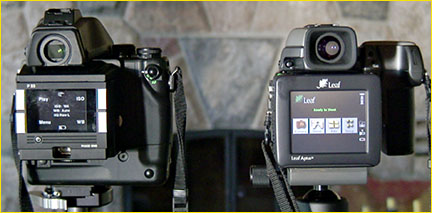
OK and DELETE
I do have a small gripe with the control menus though. One is that almost every setting requires that an "OK" button be pressed to confirm settings. Following this there is a pause of a second or two while the change is digested and aLeaflogo spins on screen. What I and some other users that I’ve talked to have complained about is that some settings require OK, while some others don’t. It’s all too easy to forget to press OK when working in a hurry, and then after the shot have the back tell you that you forgot to make the setting permanent. (If it’s smart enough to know I’ve made a mistake, why can’t it make it right?)
Setting ISO
Another concern that I have is the simple matter of setting the ISO. It simply takes too many button presses on the Aptus.Camera / scroll down one screen / ISO / select ISO / OK.
On the P25 it’sISO / select ISO / OK. It doesn’t seem like a big difference, but believe me, when you’re working quickly, it is. Almost as bad as the brain-dead mirror lockup function on the Canon 1 series DSLRs which I’ve been complaining about for years.
Boot Up Time
The Aptus took 15 seconds to boot. The P25 took 5 seconds.
The Aptus was running Version 4.100 Firmware. One reader wrote in to inform me that there is an even more recent version which boots in 8 seconds, but I can only test what I was provided. It should be noted that over the few months since pre-production samples of the Aptus first became available the company has been revising the firmware to reduce start-up time. I assume that it won’t be long before this is brought more into line with the currently faster P25 start-up time. It should be noted that all medium format backs are slugs when compared to current pro DSLRs, which essentially are now instantaneous on start-up.
The Fan
The Aptus has a fan, which the P25 does not. Air is sucked into openings on the left side of the housing and blown out of the right side openings. The fan is very quiet, and can only be heard when the camera is up to ones eye in a quiet environment. But fans of course draw power, and this obviously plays a role in the Aptus’ battery life.
This also brings to the fore the issue of power management as well as concerns when working in harsh environments. My primary concern is that when shooting in dusty and dirty conditions, the fan will suck airborne particle into and through the back. What impact this may have on component life is an open question, but if I was a photographer working from time to time in such conditions (which I am), this would be something to consider.
The reason that the P25 does not have a fan, and doesn’t need one, is because of the power management approach taken by Phase One. They describe this as Sleep architecture, where components are only powered up as needed, and otherwise are put into a quiescent state. This has a dramatic effect on power consumption, as does their dimmer but more power-stingy LCD. As well, the P25’s entire front panel where it connects to the camera body is designed as a heat sink, drawing heat from inside the back to its exterior.
The User Wheel
This is a very elegant design that makes the Aptus 22 a real pleasure to use.
Located on the upper right panel of the back is a spring-loaded wheel. It’s use can be configured by the user to perform a number of useful functions. For example, it can be set so that when shooting an inward press displays an optional histogram and schooling data, while a forward or backward press cycles though previous images. On the thumbnail review screen it can be used as a delete key. This is a very useful design feature, and well executed.
Capture Speed
Spec sheets can be misleading. Maybe not intentionally so, but nevertheless there is usually more to specs than meets the eye. Let’s take capture speed as one example.
Leaf claims a capture speed of 1.2 seconds / frame. Phase One claims 1.7 seconds / frame.
UsingSandisk Ultra III2GB cards (among the fastest currently available) I measured the following when shooting in continuous mode…
Aptus 22– 5 frames in the first 7 seconds. (1.4 seconds / frame). Pretty good.
That’s the good news. The bad news is that the Aptus then slowed down to one frame every 6.5 seconds, for a total of 8 frames in 30 seconds. (Shooting in uncompressed mode).
Phase One P25– 15 frames in the first 30 seconds, or approximately 2 seconds / frame. But, and it’s a big but, the P25 keeps shooting at the rate of 2 seconds / frame without let up; as long as you hold the shutter down and until you run out of memory on the card.
So while the Aptus is slightly faster for the first several frames (and seems even faster than it measures), once you hit the buffer wall in slows unacceptably. The P25 on the other hand, while no speed demon (no medium format cameras and backs are) can at least keep going without let-up at the same speed.
The explanation appears to be that the Phase back can write to its CF card much faster than can the Aptus, once the Aptus’ buffer is flooded.
But, the Aptus can write files more quickly when the back’s lossless compressed format is used. I did not test this setting because as requested I restricted myself to files that could be opened with Camera Raw. But I will do so when I have an update to this review. Be assured though that fast shooting with the Aptus 22 is possible if you shoot the right file format. You just can’t then use Camera Raw to work on those files.
Working With Files
On a Mac, at least, P25 file thumbnails can be viewed in the Finder. This is handy for quickly identifying and organizing material after a large shoot. This is because the Phase files have a small JPG thumbnail embedded.
The Aptus files do not have this, and therefore Adobe Bridge or the Leaf raw file application is needed to browse files.
Which brings us to a discussion of raw image processing.
My preference would have been to do comparisons between the Aptus and the Phase One P back using each of the two company’s raw processing software. But the Aptus product manager for Canada requested that I process the Aptus files in Abobe Camera Raw. His reason for this was stated as being that I was unfamiliar with the Leaf software, and very familiar with Camera Raw. Since I only had 4 days to do my testing he preferred that I do it with software that I knew. He also said that it was his belief that Camera Raw did a very fine job with Aptus files.
So, I found myself in a quandary. If I processed the Aptus files in CR and the Phase files in Capture One, I would be accused by some of potentially hobbling the Aptus. So, I decided to also process the Phase One files in Camera Raw.
But, you say,Camera Raw doesn’t P25 files. True – today. But I am a beta tester for Camera Raw, and with Thomas Knoll’s permission I can tell you that in the version of CR after the next one to come out (don’t ask me when), Camera Raw will have support for Phase One backs. I have a beta version of this software, and my testing has shown that it does a very fine job with P25 files. Workflow issues aside, I found image quality to be quite comparable.
So there you have it. I’m going to piss-off everyone with this comparison, because by trying to level the playing field (andat the request of the Leaf representative) I am using Camera Raw for the Aptus files, as well as the Phase files. So if you find this to be unfair or inappropriate, all I can do is offer you a full refund of your admission price.
But, so that you don’t go away too mad, I can also tell you that I have been promised a more extended opportunity to test the Aptus in a fitting for my Contax system, and when this happens I will be using the Leaf raw processing software as well.
Battery’s and Chargers
The Aptus comes with a 2350mAh Lithium Ion battery and single battery charger. The P25’s battery is almost the same physical size, but only 2000mAh. The Aptus’ battery hangs below the back’s rear, similar to the design that Kodak used in the DCS Pro Back 645. The Phase P series backs, on the other hand, enclose the battery completely within the back’s body.
The Aptus’ battery is made by Samsung, as is its charger. The P25’s battery is made by Canon.
The only relevance of who makes the battery and charger is that with the Phase One’s battery, because these are standard Canon ype video camera batteries, they can be purchased almost anywhere, as can the charger. The Samsung battery and charger appear to be proprietary though I am told that SBL-160 batteries can also be used.
As for battery life, over a 4 day period I averaged about one hour and 45 minutes on a freshly charged battery. This was mixed shooting, screen review and menu setting, with the screen set to 2 minute auto-turn-off, and auto turn-on after each shot. These tests were done at an ambient temperature of about 21C (70F). I typically get 3+ hours of battery life with the P25 under similar conditions.
Image Quality
Let’s get something on the table right from the get-go. At this price and performance level superb image quality is a given. Neither Leaf nor any other back maker would stay in business long unless their backs produced images capable of satisfying the most demanding professional applications. Any critique that one does of specifics of image quality, or comparisons between products, are quibbles at best. We’re dealing with the 99th percentile of state-of-the-art performance when evaluating a $30,000 back. It takes a very keen eye, and a somewhat neurotic disposition, to find meaningful differences between these products.
But, let’s try.
Colour Reproduction
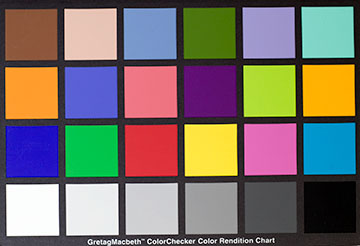

The Aptus 22 does an excellent job on colour reproduction. No serious deficiencies are seen, and any small deviations from absolute reproduction quality are easily tweaked with custom settings in camera, in the raw converter or via a custom profile with a product such asColorEyes Commercial.
Compared to the P25, in a comparison where all that’s done is to normalize exposure and select the neutral 5 square as a gray reference, what I see on a Sony Artisan monitor is that straight out of the camera the Aptus appears to have somewhat higher saturation, while the P25 colours are slightly more accurate. Not anything to get excited about one way of the other.
Resolution
Because I was using two different camera systems, and therefore different lenses, a resolution comparison is unfair to the backs themselves. In tests using the Hasselblad / Fuji 80mm lens and the Contax / Zeiss 80mm lens I found that Zeiss lens to be consistently sharper – by a small but clearly noticeable amount (see detail comparison frames below). Since I couldn’t test the Aptus back and the Phase back on the same camera body with the same lens it’s impossible to say what effect the back itself might have had on sharpness. Such a comparison and judgment will have to wait till I can test an Aptus 22 on a Contax body.
High ISO Noise and Long Exposures

The fireplace and mantle at my summer cottage
The image above shows the fireplace and mantle at my summer cottage. It was a good subject for testing performance of the Aptus 22 vs the P25 because it provided a fixed subject, with consistent light, lots of detail, and a subject demanding very wide dynamic range.
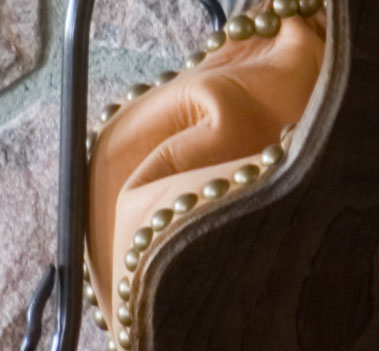
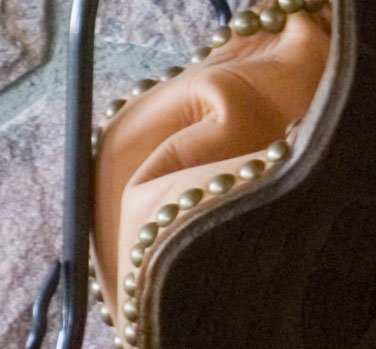
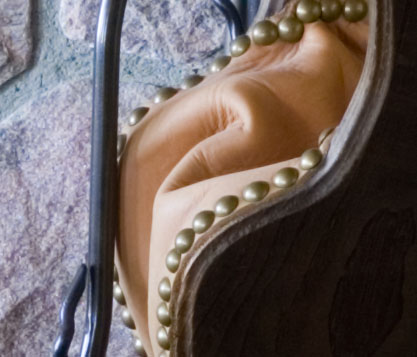
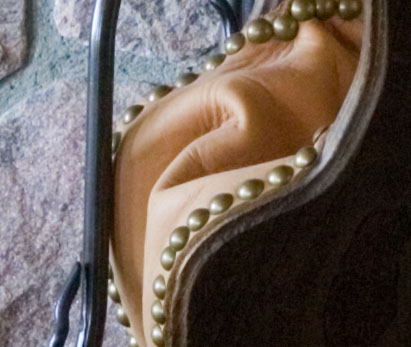
The ISO 50 shots above were 5 second exposures. I see no issues attributable to long exposures with either camera. No tests were done at longer exposure times.
Both backs also showed on slight differences between ISO 50 and 200 in terms of visible noise. Either differences between their own speeds or each other. It should be noted that the Aptus can be set to ISO 25 at the low end while ISO 200 is its high end. The P25 has ISO 50 as its lowest speed and can be set to ISO 400 and even 800 (with "binning" and consequent reduced pixel count at this speed).
Nothing of real significance was noted between either back in terms of either dynamic range or available shadow detail.
The Aptus 22 is capable of producing state-of-the-art image quality that will satisfy the most demanding professional user.
Conclusion
It’s very hard to be objective about a new product that is competitive to the one that you are familiar with. To the working photographer ones cameras and lenses become tools that need to be mastered through familiarity, and when testing something new it is all to easy to either embrace the new because of its newness, or alternatively reject it for the same reason.
With this in mind, my summary evaluation of the Aptus 22 is that it appears to be a very well designed product capable of efficient use in either the studio or field. I found the lovely big LCD screen to be captivating at first, but then not a big deal one way or the other in actual use. The extensive menu options that the Aptus back provides can either be used, or ignored, though I wish that setting the ISO was not such convoluted procedure.
Based in my all too brief evaluation I must say that I found the Aptus design to be generally well thought out and the image quality everything one could wish for. Photographers working in harsh environmental conditions might have some concern for the fan issue, and certainly any user will want to have several extra batteries for long days of shooting in the field. A second battery charger would therefore also be a good idea, as the one provided can only do a single battery at a time.
I hope to revisit the Aptus 22 for a more intensive evaluation, and hopefully a location shoot, once a version for the Contax 645 is available for a longer term loan.
